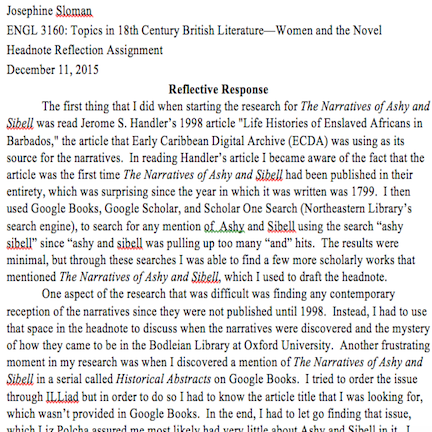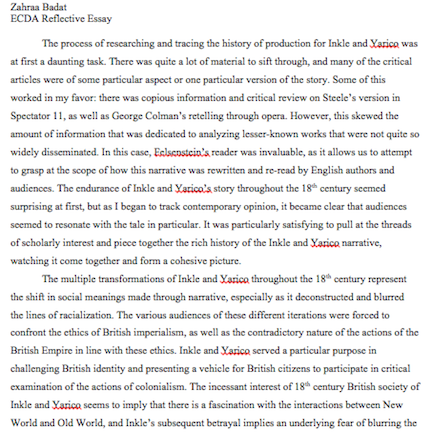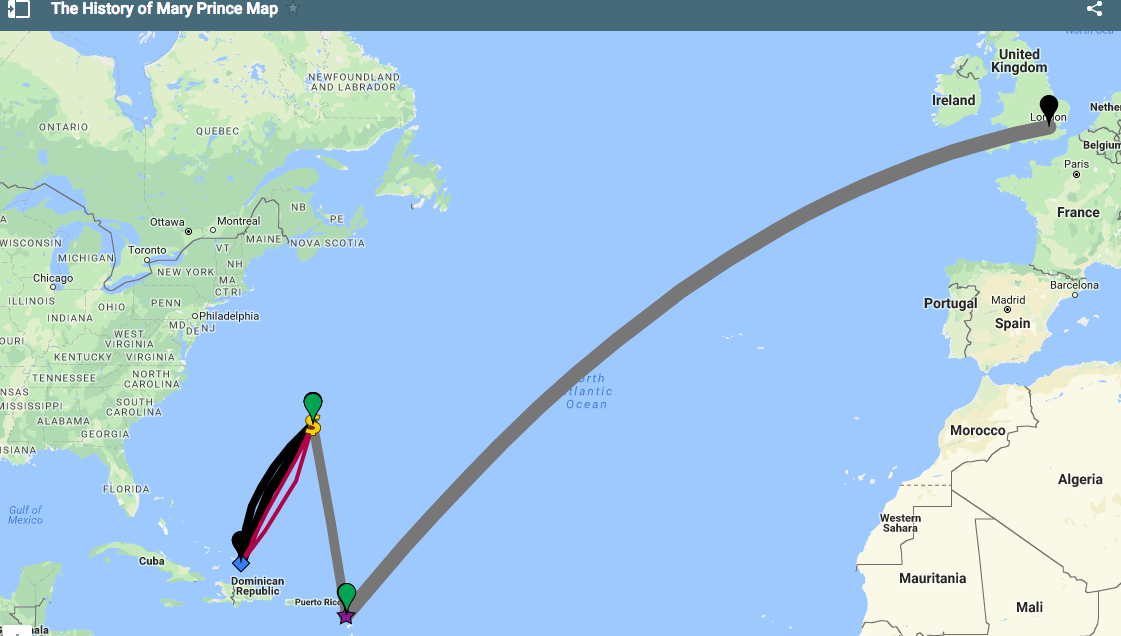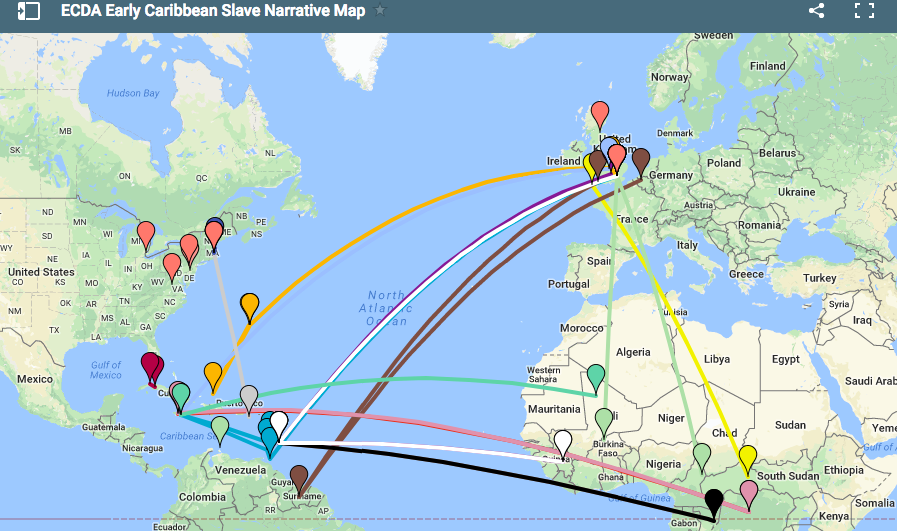Featured Student Projects
Mapping the History of Mary Prince
Above is a map produced by scholar Gabriel Feldstein (Northeastern University | Spring 2014), which offers a spatial representation of the movements of Mary Prince in the History of Mary Prince (1831). By clicking on the map, you will be taken to the interactive version complete with descriptions of each point on the map.
Gabriel Feldstein: I think this map does well in showing the diasporic elements of the slave narrative, as looking at the separation of the family and complicated notions of home create a sense of transience in Prince's narrative. This map demonstrates the constant, and abundance of, struggle and movement before freedom is finally reached.
Mapping the Early Caribbean Slave Narrative
Above is a map produced by scholar Lindi Nguyen (Northeastern University | Spring 2014), which maps spatial data on authors and publications related to early Caribbean Slave narratives. By clicking on the map, you will be taken to the interactive version complete with descriptions of each point on the map.
Lindi Nguyen: As an alternative way to navigate the Early Caribbean Slave Narrative Exhibit, we can use this map to visualize not only the widespread diaspora that came as a result of slavery, but where these voices came to be heard through narrative publication as well. To locate these narratives and authors on this map means to view slavery’s impact on a global scale. By localizing these texts, we can better understand movement and publication trends prevalent to the Caribbean slave industry during the 18th and 19th century.

Headnote for The Narratives of Ashy and Sibell
Above is an excerpt from a reflective response written by scholar Josephine Sloman (Northeastern University | Fall 2015). Josephine's reflection was accompanied by a headnote she wrote for The Narratives of Ashy and Sibell. The text was transcribed in 1799 by John Ford in which he recorded the narratives of two female slaves in Barbados.
Josephine Sloman: "Keeping this concept of 'reading against the grain' in mind, as I was conducting research for the headnote as well as reading secondary source material to get a better understanding of the slave narrative genre in general, I noticed that although The Narratives of Ashy and Sibell have not been used in a scholarly argument regarding gender, their narratives would allow for this sort of reading."

Headnote for Inkle and Yarico
Above is an excerpt from a reflective response written by scholar Zahraa Badat (Northeastern University | Fall 2015). Zahraa's reflection was accompanied by a headnote she wrote for Inkle and Yarico, who first appeared in Richard Ligon's History of the Island Barbados (1657). Since then, there have been numerous translations and adaptations. Perhaps the most famous is George Colman's Inkle and Yarico: An Opera in Three Acts (1787), which was widely performed in the late eighteenth century.
Zahraa Badat: "The multiple transformations of Inkle and Yarico throughout the 18th century represent the shift in social meanings made through narrative, especially as it deconstructed and blurred the lines of racialization. The various audiences of these different iterations were forced to confront the ethics of British imperialism, as well as the contradictory nature of the actions of the British Empire in line with these ethics. Inkle and Yarico served a particular purpose in challenging British identity and presenting a vehicle for British citizens to participate in critical examination of the actions of colonialism."


